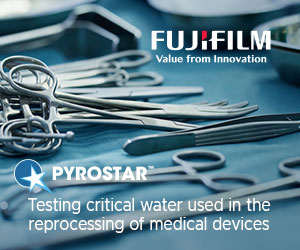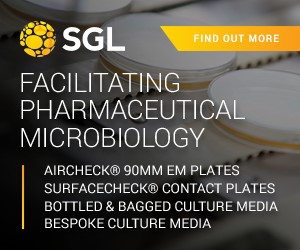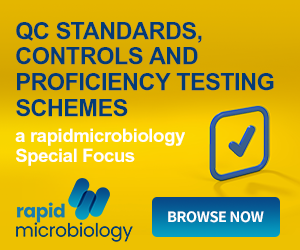Studies Validate Multipurpose Capability of Copan ESwab
| | Recent studies presented at the American Society for Microbiology 109th General Meeting in Philadelphia, Pennsylvania and in the 19th European Congress of Clinical Microbiology and Infectious Diseases in Helsinki, Finland validate Copan ESwab capabilities as a versatile multiplatform collection and transport system suitable for aerobes, anaerobes, and fastidious bacteria, as well as show improved detection for MRSA testing and high quality Gram stains. Copan ESwab is the only patented liquid-based multipurpose collection and transport system that maintains viability of aerobic, anaerobic and fastidious bacteria and is a truly open platform suitable for traditional culture, Gram Stains and molecular assays that can be managed in a fully and automated process. |
Among the recent studies presented during ASM, Dr. Steven Allen, a well known authority in the field of anaerobic bacteriology, presented results of his quantitative evaluation of ESwab's ability to maintain viability of a large selection of clinically important anaerobic bacteria. For comparison, Dr. Allen tested ESwab in parallel with Becton Dickinson Port-A-Cul (PAC) agar tube transport system, which is historically recognized as one of the gold-standards for anaerobic specimen transport. His findings showed enhanced release of anaerobic bacteria from the nylon flocked ESwab compared to the PAC swab and that ESwab was able to maintain anaerobes when specimens were held at room temperature or refrigerator temperature for up to 48hrs. In today's modern healthcare systems, specimens for culture are often transported to centralized or referral laboratories for processing. Transport delays are unavoidable and anaerobes in particular are the most fastidious category of bacteria that the laboratory must detect. Viability of microorganisms within the sample must be maintained for extended periods of time and Dr. Allen's quantitative study provides reassurance about the performance capabilities of ESwab even with demanding bacteria. Also during ASM, Dr. Musa Hindiyeh presented a detailed study focused entirely on fastidious aerobic bacteria namely Streptococcus pneumoniae, Haemophilus influenzae, Neisseria gonorrhoeae and Nesseria meningitidis. In particular, using the CLSI M40 recommended test protocol, he challenged ESwab and other commercial swab transports with multiple serotypes of Streptococcus pneumoniae (SP), an important and notoriously fastidious organism that quickly autolyzes when placed in unfavorable conditions. Dr. Hindiyeh reported ESwab as demonstrating the best overall performance in terms of maintaining organism viability including 9/10 SP serotypes recoverable after 48 hrs. Three studies at ASM focused specifically on the use of ESwab for collection of samples for MRSA. Using traditional culture methods, Milburn showed that MRSA detection increased from 82.2% with a traditional collection swab to as high as 91.8% after pre-enrichment using ESwab. In another study, presented by Marlowe, no statistical performance differences were observed between the ESwab samples planted directly onto MRSASelect media and swabs processed by Cepheid Xpert MRSA, a sensitive molecular assay. Thus, demonstrating that ESwab's better performance when used in conjunction with MRSASelect media improves MRSA culture surveillance sensitivity without the need to perform an enrichment step. In a third study, by Silbert, the versatility of ESwab was highlighted allowing specimens from multiple sites to be pooled into one collection system, thus saving significantly on MRSA screening costs and at the same time potentially increasing detection rates. At ECCMID, Frans demonstrated that the liquid format of ESwab allowed laboratories to conveniently pool MRSA samples taken from multiple sites, namely throat, nose and perineum swabs into one Cepheid Xpert assay tube, which allowed significant saving in cost and produced less invalid results compared to the traditional swab currently recommended. Also, at ECCMID, Fontana compared smears of clinical specimens collected and transported in Copan ESwab to traditional clinical specimens collected and transported in Amies Gel Transystem for detection and differentiation of bacteria with the Gram staining method. The results of this study showed that ESwab identified more human cell and bacterial species than the traditional Amies gel system. Also, the study found that slides prepared from ESwab at 24 or 72 hours were equal to those slides prepared upon receiving the specimen. The quality of smear preparation from the ESwab system allowed for easier identification of human cells and identification of greater number of microorganisms. Among the most readily seen organisms in ESwab preparations were yeasts, Gram-negative bacilli, and Gram-positive and Gram-negative diplococci. These studies are only a few examples of research papers presented at this year's ASM and ECCMID meetings which support the multiplatform applications of Copan ESwab, the only liquid-based multipurpose collection and transport system that maintains viability of aerobic, anaerobic and fastidious bacteria with the added capabilities for various diagnostics assays. |
NOTE: This item is from our 'historic' database and may contain information which is not up to date.
Source : Copan Diagnostics, Inc. View Company Information
Posted on June 2, 2009






